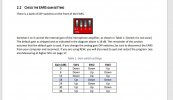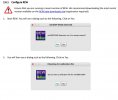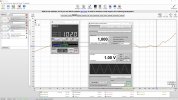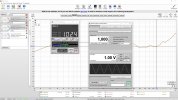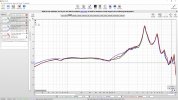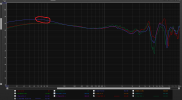So dB(Z), which I used in my measurements is a linear recording method across all frequencies - in that case my graphs should be more applicable to relating to distortion measurements that people like Amir creates, is that so?
Not exactly as the gain in the EARS is different and so is the compensation (if you are using it).
Would the 104dB peaks in my graph relate directly to the 104dB distortion graphs that Amir produces (re bass) or are the "units" not in the same format?
That depends on whether or not the test fixture is calibrated or not.
Yo have a HD600. The sensitivity is known. You can also measure or calculate which SPL belongs to a 1kHz 0dBFS tone and see if that matches.
I would not use a 400Hz tone as the pad condition of both measured HD600 is not known.
Do you agree that the LZpeak red line in my graphs are corresponding to the bass parts of the track?
They related to accumulated signals. It measures the total signal not just the bass. The biggest part of it will be bass. Have a look at the frequency spectrum if you want to know for each specific song (in peak hold mode)
Why are the dB figures in my graphs significantly higher by a large margin than my previously calculated max - my previously calculated max (86dB) was based on Vrms (yet I'm seeing 104dB in parts of these graphs), is that the reason.......am I measuring the absolute maximum peaks in my graphs whereas my calculations were based on Vrms?
Yo are looking at peak values which may or may not be calibrated. Peak levels are 1.4x higher than RMS for the same signal for one thing (3dB) and the average can be anything from just below RMS to 10 to 20dB below that. Depending on the recording DR.
dB(A) seems like a better means of measuring hearing damage potential, so I should probably remeasure using dB(A) if I want to assess "hearing damage", but seems better to use dB(Z) to correlate to distortion figures.
dB(A) is often used in the scales you see everywhere and the warnings that come with it are based on prolonged exposure to those average and dB(A) weighted noise levels. Noise isn't as dynamic in nature as music. Perhaps with the exception of highly dynamic compressed 'music' with DR ratings close to 1 or 3.
dB(Z) will give you the electrical levels converted to SPL. Similar to the shape of a music signal where it shows the envelop of the signal.
You must realize that there is also pinna gain so when the total music signal has a bass note near -3dB and for instance a 4kHz signal peak that makes it reach the 0dBFS line means that the measured acoustical signal at the mic. (assuming flat FR) can be higher than expected.
When the FR is wonky and lets say has a peak of +8dB at 6kHz (not uncommon) and a Harman type bass boost on top of that but you use the efficiency rating given at 400Hz, 500Hz or 1kHz or based on noise in a limited frequency range that is rated at say 100dB at 1V then the bass output from the headphone could be +5dB more efficient and when that also has a treble peaking at 6kHz (+8dB more efficient) then the actual measured peak could well be 5 or 6dB higher (in a short moment but registered by the peak hold function) than expected based on the used sensitivity number.
So it is not as cut and dry as it seems.
Measured values could also be lower than expected when bass rolls off and there is a dip/recession at higher frequencies.
In that sense, making measurements with a calibrated (important aspect) microphone and based on compensated (not Harman but probably optimum hifi) will give you the best possible efficiency numbers at each given frequency (the plot that basically is what one sees on the DAC output and not what the measurement fixture's raw signal gives you.
The OP wanting to use an UMIK should do measurements creating a sealed environment around the mic and the proper distance (so about flat from lightly compressed pad distance) and then again as the mic is used is intended for free space measurements the response may not be the same as reality. Also hard surfaces around the microphone that seal the headphone (so no leakage anywhere) and positioning opposite the driver can cause erroneous readings.
Doing accurate measurements for headphones is a biatch. Also confounded by product tolerances.
I hope I used the right words to explain this, otherwise I can try to clarify this further.

